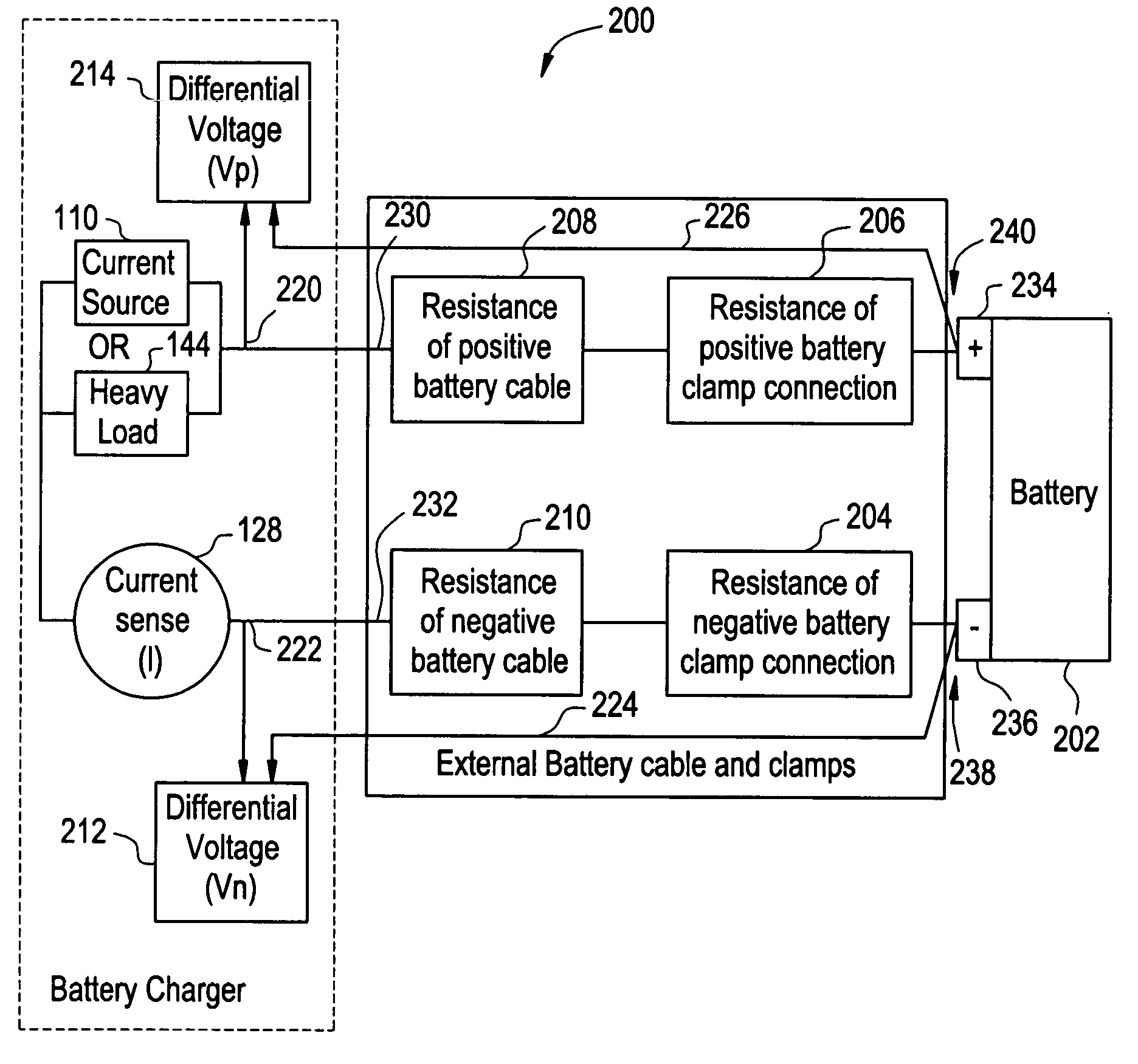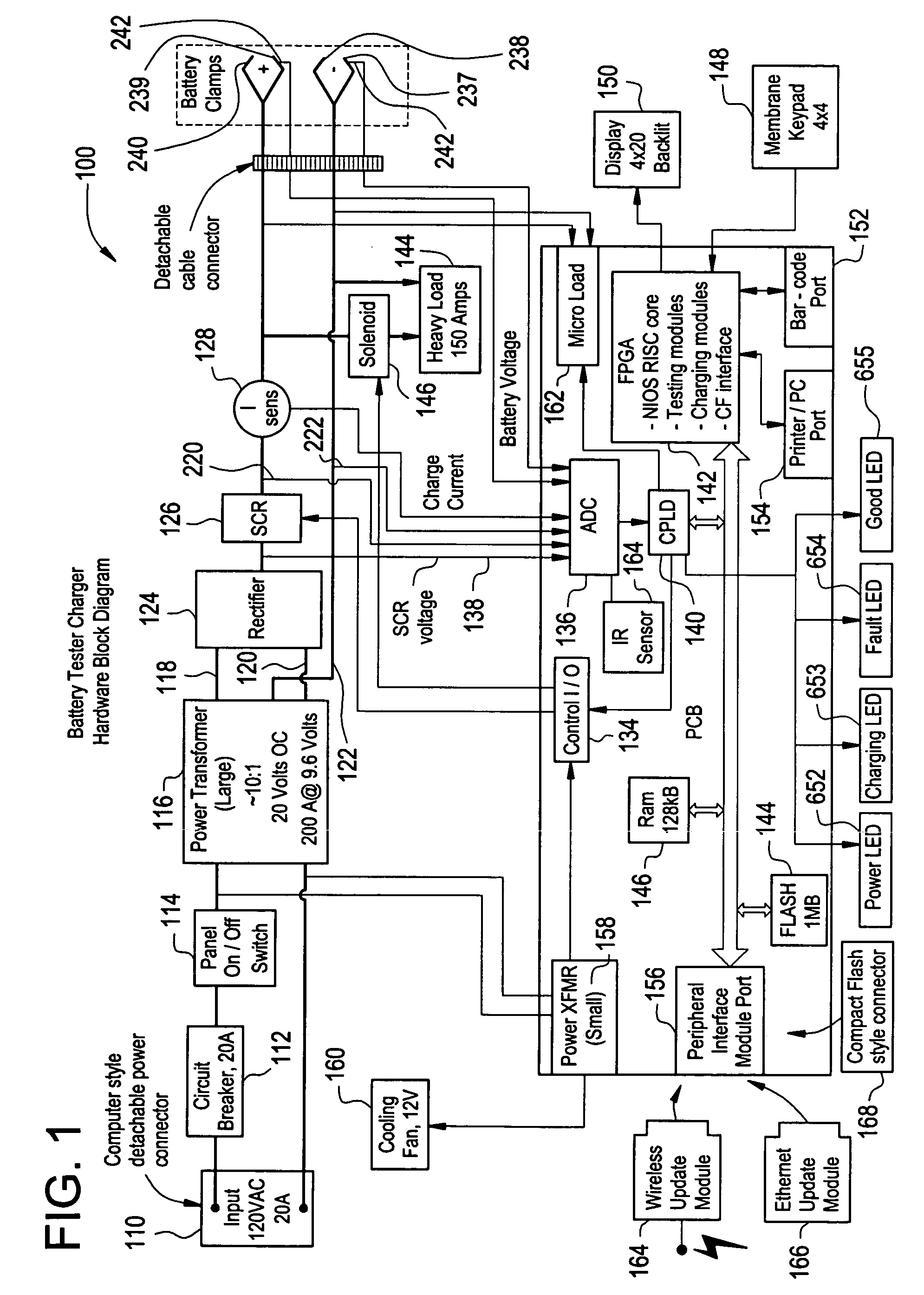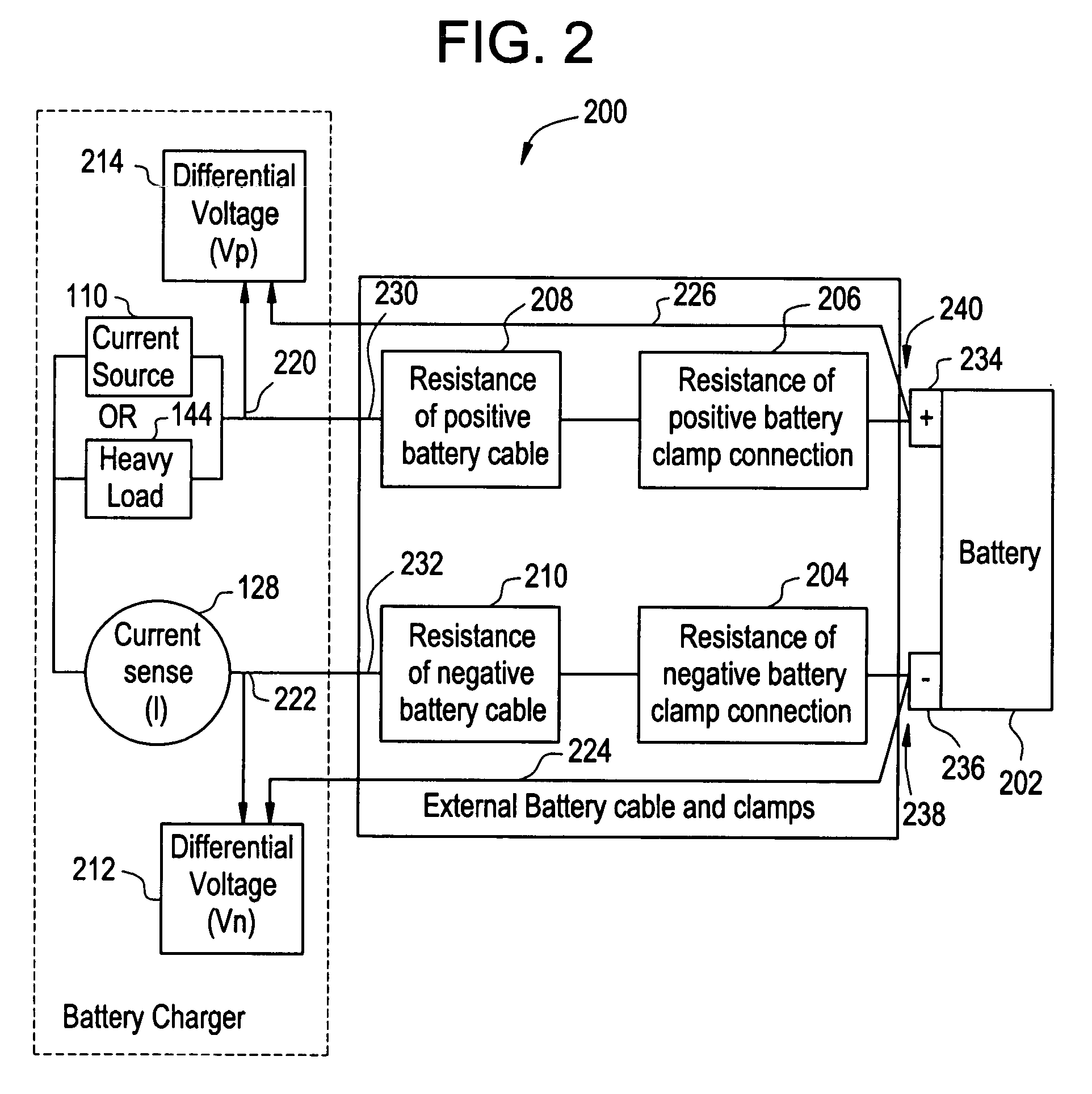Apparatus and method for incorporating the use of a processing device into a battery charger and tester
a processing device and battery charger technology, applied in the field of apparatus and methods for charging and testing batteries, can solve the problems of lead-acid batteries and other types of batteries, poor recharging control in conventional chargers, and depletion of power of lead-acid batteries
- Summary
- Abstract
- Description
- Claims
- Application Information
AI Technical Summary
Benefits of technology
Problems solved by technology
Method used
Image
Examples
Embodiment Construction
[0027]The present invention relates to a battery charger / tester with a processor that is linked to a variety of devices, such as a charger, a tester, an input and output devices and communication ports.
[0028]FIG. 1 is an embodiment of the current invention. The battery charger / tester 100 (“charger 100”) can include a power source 110 that provides a 120V (volts) AC (alternating current) to the charger 100. A circuit breaker 112 is provided to prevent damage that can be caused by a sudden power surge or a short in the system. A power switch 114 is linked to the power source 110 to enable the operator to turn the charger 100 on or off.
[0029]A power transformer 116 is provided to step down both the voltage and current to a level that enables the charger 100 to charge and / or test a battery. In a preferred embodiment, the power source 110 supplies the charger 100 with 120V AC. The power transformer 116 reduces the 120V AC to approximately 20–25V AC, which is optimal for charging the batt...
PUM
 Login to View More
Login to View More Abstract
Description
Claims
Application Information
 Login to View More
Login to View More - R&D
- Intellectual Property
- Life Sciences
- Materials
- Tech Scout
- Unparalleled Data Quality
- Higher Quality Content
- 60% Fewer Hallucinations
Browse by: Latest US Patents, China's latest patents, Technical Efficacy Thesaurus, Application Domain, Technology Topic, Popular Technical Reports.
© 2025 PatSnap. All rights reserved.Legal|Privacy policy|Modern Slavery Act Transparency Statement|Sitemap|About US| Contact US: help@patsnap.com



